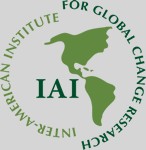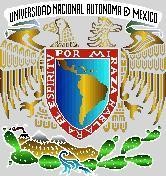
Copyright © Universidad Nacional Autónoma de México. All Rights Reserved.



What's New?
CCA-UNAM
Dr. Marcelo Olivera joined our group in March 2008, as a post-doctoral fellow with funding provided through CCA-UNAM. He earned a PhD in Economics from UNAM in 2007 and is now working on assessing the economic impact of extreme events of precipitation and land-falling tropical cyclones on the agriculture and health sectors of the State of Guerrero, where Acapulco is located. His research has led to the development of a non-linear economic model to explore the relationship between temperature, precipitation and tropical cyclones and the agricultural activities in the region, including several future climate scenarios for precipitation, temperature and changes in the number of cyclones. This collaboration has resulted in a recent publication, where the economic costs associated to losses in the corn and bean crops due intense precipitation are evaluated. The study appeared in Búsqueda, a journal of the Universidad Mayor de San Simón in Cochabamba, Bolivia (Olivera et al, 2008).
Another aspect that is being studied is the relationship between rainfall associated with land-falling and land-grazing tropical cyclones in the East Pacific and the development of classic dengue in the State of Guerrero, where the world-renowned port of Acapulco is located. A vector auto-regression (VAR) model was applied to describe the evolution of a set of k variables (called endogenous variables) over the same sample period as a linear function of only their past evolution. The model analyzes the times series of accumulated precipitation, a function of the minimum and maximum temperatures, the number of tropical cyclones that affected the region and the number of extreme events (considered as situations when the precipitation amount was two times more (or less) than the mean of the population, and the number of dengue cases, with a weekly time resolution for the period 1995-2006. Conditions associated with El Niño, neutral o La Niña, as classified by the Climate Prediction Center of the National Oceanic and Atmospheric Administration, were used to stratify the dataset. An exogenous variable, related to the mortality and the funding that the government invests to prevent the disease, is also included in the model as a “health index”. This VAR methodology allows for the development of impulse-response functions, which can predict the number of dengue cases that will develop as a function of time, after the event (such as hurricane landfall) has occurred. As an example, the model results show that the number of dengue cases start to rise and reach a peak two weeks after an event but the response is not significant by five weeks during El Niño years. These results can be used to recommend prevention and control measures to the government, to optimize the effectiveness of the funds invested.
Olivera V., Marcelo, Graciela Binimelis de Raga y Roberto Orbe C., 2008: La Dimensión Económica de los Desastres Asociados a Fenómenos Naturales: Adaptación al Cambio Climático. Búsqueda, Año 19, Número 26.





